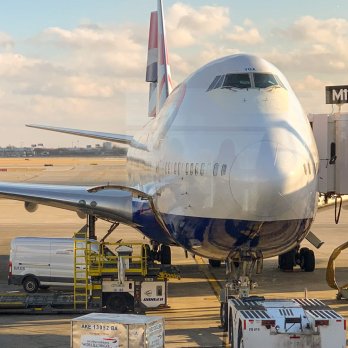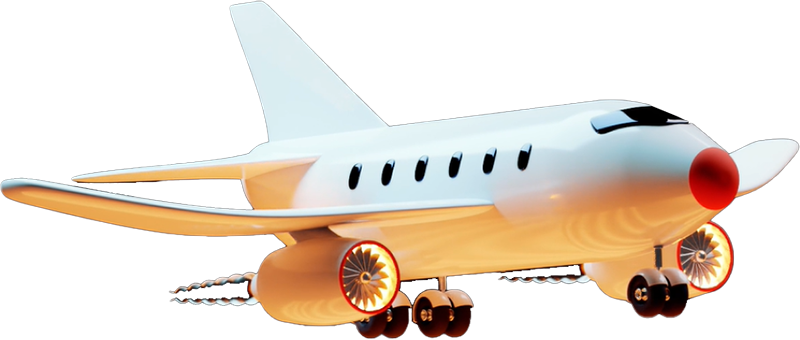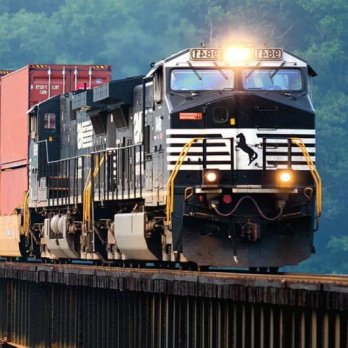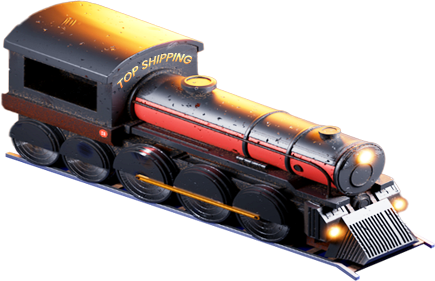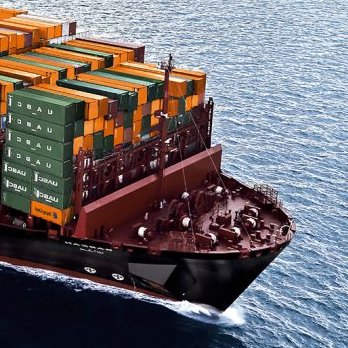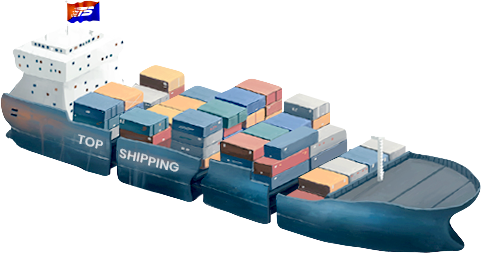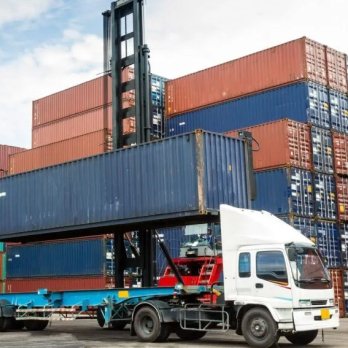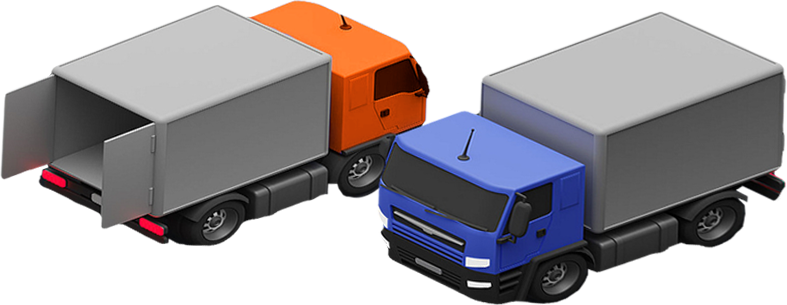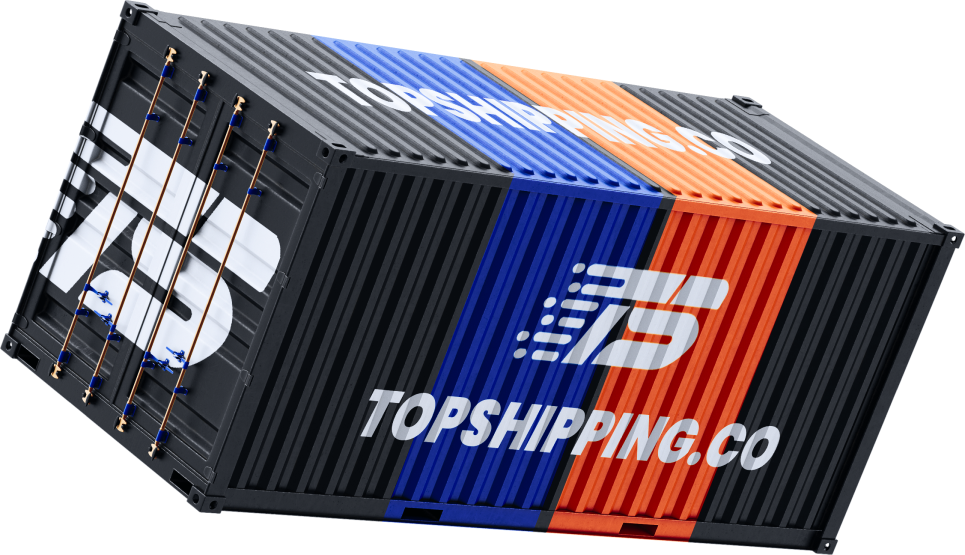
Introduction to Rail Freight
Rail freight is a cornerstone of international logistics, providing a quick and safe option for transporting goods over land.
This method utilises dedicated railways to transport goods in bulk, particularly over long distances.
It is ideal for heavy and high-volume consignments. As demand for green mobility increases, rail freight offers a cost-effective and eco-friendly means of transportation.
We at Topshipping help customers to find and implement rail freight solutions best suited to their logistics needs.
What is Rail Freight?
Rail freight is a method of delivering commodities using trains. It is commonly used for shipping large quantities of goods over long distances. Rail freight has a critical role in regional and global trade. It connects industrial hubs to ports and logistics centers. Topshipping offers door-to-door rail freight services according to your business.
Benefits of Rail Freight
Rail freight is more economical option compared to other transportation methods, especially for bulk shipping. It is eco-friendly, with relatively lower carbon emissions. Rail transport is also less climate-sensitive and less traffic delay-sensitive, which ensures on-time delivery. Rail reduces the use of several shipments due to its high capacity. Topshipping's rail services are preferred by many companies to make their supply chains more efficient.
Rail Freight vs Other Transportation Methods
Unlike trucking, rail freight is more suitable for high-volume and high-tonnage freight. Unlike air freight, it gives a balance between cost and transit. Sea freight can be utilised to its best advantage in intercontinental shipments, while rail is best suited for land-linked countries. Combination of rail and trucking enhances coverage and flexibility. Topshipping helps customers choose the optimal mode for their shipment and schedule it accordingly.
Types of Rail Freight Services
Unlike trucking, rail freight is more suitable for high-volume shipments. Unlike air freight, it gives a balance between cost and transit. Sea freight is best suited for intercontinental shipments, while rail is most effective for land-linked countries. The combination of rail and trucking enhances coverage and flexibility. Topshipping helps customers choose the optimal mode for their shipment and schedule it accordingly.
Full Train Load (FTL)
Full Train Load (FTL) is a rail service where one rents a complete train for carrying freight, which is most suitable for huge shipments. It ensures direct shipment with less stoppage, having improved transit times. FTL minimizes handling and potential damage because the cargo moves in one train throughout the trip. Industries of all kinds, including mining, automotive and agriculture, typically utilize the services of FTL. Companies that require high-volume dedicated transportation regularly come to Topshipping for FTL solutions.
When to Use Full Train Load (FTL)
FTL is most economical when the goods volume fills the entire train or if the delivery needs to be expedited. FTL is ideal for time-sensitive or fragile products with minimal transit breaks. FTL also benefits repeat big-volume shippers by reducing the transportation cost per unit. Where cargo consolidation is not possible, FTL is then followed. Topshipping helps in analyzing cargo needs to determine when FTL is the most appropriate solution.
Less than Train Load (LTL)
Less than Truckload (LTL) is a type of shipment that does not require a full truckload and is consolidated with other freights. It allows companies to share railroad space and costs, making it more affordable to small and medium-sized businesses. LTL is flexible and cost-effective, yet still has the fundamental benefits of rail freight. It provides higher shipping levels without having high inventory costs. Topshipping offers LTL capabilities for customers looking for a scalable and optimized freight solution.
When to Use Less than Train Load (LTL)
LTL is a great choice for smaller shipments that don’t make sense to full train. It is a great option for waving or sample shipments, particularly for businesses that are trying out new marketplace opportunities. When inventory turnover is relatively high, it allows timely resupply without needing warehousing. Many businesses with an inconsistent shipping volume prefer the flexibility of LTL. Topshipping’s LTL rail services are provided to offer both value and reliability.
Intermodal Rail Transport
Intermodal Rail Transport merges rail freight with other methods, such as trucking, to create a seamless shipping experience. The containers will transfer from truck to train without offloading their contents, minimizing handling costs and transit delays. This solution maximizes supply chain flexibility and reduces transportation fees. It's commonly used in cross-border shipping requiring multiple modes of transportation. Topshipping is a professional in intermodal logistics that maximize route efficiency and reduce transit time.
Rail + Truck Combination
Combining rail and truck transport for freight maximizes the benefits of both, including efficient rail for long-distance transport and flexible truckload flexibility for last-mile delivery. This is especially useful when final destinations are not directly aligned with rail terminals. Thus, this combination enables businesses to access larger markets at no cost or without compromising price or delivery periods. It reduces road traffic and environmental impact. Topshipping's intermodal solutions offer streamlined cargo transportation from the point of origin to the point of final delivery.
Rail Freight Costs and Pricing?
Several key factors, including cargo volume, distance, seasonal demand, route length and complexity, affect rail freight pricing.
While generally less expensive than air freight and sometimes even road freight, extra costs, such as fuel surcharges and terminal fees, may be involved.
Bulk shipments benefit the rail economy of scale the most, especially on transcontinental routes. When compared to other modes, rail freight offers competitive prices with a smaller environmental footprint. Topshipping provides transparent and optimized pricing for every shipment.
How are Rail Freight Rates Determined
How Rail Freight Pricing Is Determined Rail freight pricing is determined by numerous factors like cargo volume, miles, and seasonal demand. Base prices are typically established per ton-mile with rate discounts for high-volume agreements. The commodity also determines the price with dangerous or oversized commodities imposing additional costs. Terminal fees, handling charges, and container usage fees are typically included in rail freight. Topshipping provides transparent rate breakdowns to allow customers to adequately plan.
Weight and volume of cargo
Cargo Weight and Volume Larger and heavier shipments often have lower per-unit costs with the cost advantage. Carriers measure both actual weight and cubic measurements to determine usage of space. Overweight or dense shipments might entail surcharges or usage of specific equipment. Accurate measurement of the shipment is the route to avoiding unexpected costs. Topshipping assists clients with affordable packaging and cargo planning.
Route Distance
Route Distance More routes have increased total cost but lower per kilometer cost than trucking. Route selection has a great influence on price and transit time, with tactical route selection preferring high-frequency, direct routes for minimizing delay and surcharge. Some rail corridors have preferential rates for bulk or repetition load shipments. Topshipping evaluates route options to present competitive prices.
Demand and Seasonality
Seasonality and Rates of Demand can fluctuate as a result of seasonally caused factors like holidays, harvest seasons, or spikes in industrial demand. High-demand seasons create capacity shortages and premium prices. Shipping during the low-demand season can score deep discounts. Forecasting computer programs and flexible scheduling deal with these fluctuations. Topshipping shipping experts recommend customers how to coordinate shipping schedules according to market trends.
Fuel Surcharges and Additional Costs
Fuel Surcharges and Extra Charges Fuel surcharges are normally charged to offset fuel price variations, especially on long distance routes. Customs clearance, warehousing, and equipment rental are some other extra charges. Detention charges can be charged if the containers are held beyond free time at terminals. Security surcharges and insurance charges also are part of the total costs. Topshipping reveals all feasible charges in advance.
Comparing Rail Freight Costs with Other Transport Methods
Comparing Rail Freight Costs with Other Transport Methods The cost of rail freight is lower than that of air freight and more stable in price than road transport. For medium- to long-distance movement, it combines low cost and speed in a desirable way. Rail rates are less fuel-price- and driver-shortage-sensitive than trucking. Rail bulk capacity also decreases per-unit handling costs. Topshipping helps customers compare modes of transport to find the cheapest and most efficient method.
Rail Freight Routes and Infrastructure
The article is based on established data networks and primary cargo paths.
Transcontinental paths connect ports, inland nodes, and industrial parks with continents to allow movement of trade.
Advanced rail nations such as the U.S., China, and Germany heavily rely on this form of transportation for local distribution.
Interconnected networks in Europe and Asia offer broad international rail freight coverage. Topshipping utilizes these paths to build dependable door-to-door logistic systems.
Major Rail Freight Corridors
Rail freight systems span vast distances, connecting the major economic regions of continents. In North America, the United States rail network spans about 140,000 miles of track, making possible the shipment of 1.5 billion tons of goods annually. The Trans-European Transport Network (TEN-T) in Europe combines the major rail corridors, enhancing cross-border freight transport. Asia's rail system, especially China's Belt and Road Initiative, has stretched railway links to Europe, opening intercontinental trade. The massive routes enable speedy, bulk cargo transportation, reducing reliance on road haulage. Topshipping takes advantage of these strategic rail routes in order to optimize shipping arrangements for its clients.
Transcontinental Rail Routes
Transcontinental rail connections, such as the Eurasian Land Bridge, connect China and Europe, offering a faster option than marine transport. Transit is significantly reduced by this route, improving supply chains. North America's Canadian National Railway provides a coast-to-coast railway connection, binding ocean ports of the Atlantic and Pacific Oceans. Transcontinental connections are important in international trade, allowing the transportation of commodities over extended distances. Topshipping utilizes these routes to provide clients with expedited and reliable shipping options.
Regional Rail Networks
Regional rail networks play a crucial role in connecting local industry to the national and international markets. For instance, India's Dedicated Freight Corridors aim to ease congestion on existing tracks and increase the efficiency of freight. In Europe, regional networks serve to connect industrial hubs for intra-European trade. Regional networks offer last-mile connectivity, a prerequisite for timely delivery. Topshipping incorporates regional rail transport to offer end-to-end logistics solutions according to customers' requirements.
Significant Rail Freight Hubs
Strategic rail freight terminals are important nodes of the transport infrastructure that enable cargo consolidation and distribution.
The nodes are constructed with sophisticated infrastructure to effectively process various types of cargo. The terminals can ensure smooth intermodal transshipment of goods to combine rail with road, sea, or air transportation.
Smooth operation within the terminals is critical to maintain low costs and transit times. Topshipping collaborates with strategic freight terminals to ensure timely and seamless transportation of cargo for clients.
North American Rail Hubs
Some of the major rail hubs in North America include Chicago, Kansas City, and Memphis, which serve as focal points for freight distribution. Chicago, or the nation's rail capital, connects a number of Class I railroads, facilitating extensive cargo movement. The hubs have intermodal terminals, facilitating seamless interchange from the railroad to other modes of transport. They play a critical role in enabling domestic and international trade. Topshipping leverages the use of these hubs to provide optimized itineraries and reduced transit time to customers.
European Rail Freight Hubs
Europe's main freight rail hubs, such as Duisburg in Germany and Antwerp in Belgium, are the pillars of the continent's logistical network. Duisburg hosts the largest inland port in the world that connects rail with river and road freight. These hubs facilitate reliable transport of goods in Europe and internationally. They are equipped with advanced terminals to handle different cargo types. Topshipping works with these European hubs to deliver clients' smooth and reliable freight services within the continent.
Kinds of cargo in rail freight
Rail freight has the capability to handle a range of cargo from bulk commodities to specialty items.
Common cargo includes agricultural produce, coal, minerals, chemicals, and consumer goods. Container shipping offers the protection for transporting delicate or high-value goods.
Refrigerated rail cars offer for transporting temperature-sensitive cargo such as pharmaceuticals or perishables. Topshipping organizes suitable rail solutions for each type of cargo to ensure safety and compliance.
Bulk Cargo
Bulk cargo is massive amounts of loose commodities that are typically transported in hopper cars or open-top wagons. Such cargoes are ideal by rail freight due to the massive capacity of rail transport and affordability. Some of the most prevalent bulk shipments include raw materials, minerals, and agricultural produce. The ability of rail to transport massive weights over long distances makes it the best mode of shipping for bulk cargo. Topshipping offers specialized bulk shipping solutions to businesses in various sectors.
Farm Products
Grain, corn, soybeans, and other agricultural products are frequently hauled by rail from the rural farm areas to the processing plants in the cities or seaports. The rail network offers on-time bulk shipments with minimal handling, ensuring product integrity. Protective railcars such as covered hoppers protect shipments against weather and contamination. Rail haulage also saves farmers and exporters money. We optimize your farm freight for highest reliability with Topshipping
Minerals and Coal
Rail transport is the most cost-effective method to move coal, ores, and other heavy minerals. These commodities tend to be developed in remote locations and need reliable transportation to processing facilities or export ports. Open-bulk railcars facilitate easy loading and unloading. The modularity of rail also facilitates varying supply levels. Topshipping works with handpicked carriers to manage complex logistics for mining and energy markets.

Containerized Cargo
Containerized cargo is shipped in standardized containers, thus ideal for intermodal freight. Railroads provide guaranteed, timetabled services that augment ocean shipping, particularly to inland destinations. The approach minimizes handling, reduces the risk of damage, and facilitates convenient transfer between trains, trucks, and ships. At Topshipping, we facilitate smooth container flow through multimodal routes, decreasing transit times and enhancing cost-effectiveness.
Refrigerated Rail Freight
Refrigerated rail vehicles, or reefers, maintain specified climatic conditions throughout transit for temperature-sensitive goods such as foodstuffs, pharmaceuticals, or chemicals. The vehicles possess cutting-edge refrigeration equipment and live tracking to ensure secure cargo protection. Rail's energy-efficient operation makes it a clean alternative compared to road freight. Topshipping supports customers in transporting perishables via rail via best-in-class reefer options and visibility through and through.
Oversized and Heavy Freight
Trains are generally the only appropriate mode of transport for oversize or heavy shipments like equipment, transformers, or heavy industrial modules. Special flatcars and planning are required to ensure safe transportation and compliance with infrastructure restraints. Such loads are primarily transported under permit and escorted transport. Topshipping professionals manage heavy freight projects with precision and professionalism.
Rail Freight Safety and Regulations
Safety of rail freight is a top priority and monitored by international regulations and country laws. Rail transport is safer than roads with fixed tracks and fewer accidents.
The UIC and individual national railway administrations offer specifications on maintenance, cargo handling, and procedures for operating operation.
Compliance ensures protection of the cargo and safe environmental operation. All of our freight is committed to up-to-date rail safety standards by Topshipping.
Rail Freight Safety Measures
Safety in rail freight is managed by strict protocols that help minimize accidents and protect cargo, personnel, and infrastructure. They include periodic inspection, high-performance brakes, and computer-controlled technology. Modern freight trains also include real-time monitoring for the detection of equipment failures and natural disaster hazards. Rail transport is quantifiably safer for hazardous and high-value goods than road transport. Topshipping ensures all shipments are safe to ensure the delivery of safe and reliable service to clients.
International Rail Regulations
International rail freight must comply with regulatory frameworks varying by region, being uniform and compatible across boundaries. The regulations encompass safety, customs, environmental protection, and handling of cargo. For international shipments, compliance and conformity with the aforementioned is essential. Topshipping aids clients in comprehending these complex rules for smooth cross-border transport.

UIC and IRU Standards
The International Union of Railways (UIC) sets global standards for rail systems, and the International Road Transport Union (IRU) advances multimodal transport policy. UIC standards govern technical specifications, safety, and interoperability of freight wagons and lines. UIC standards enable trains of different countries to operate on networks sharing common infrastructure smoothly. Topshipping follows UIC guidelines for European freight and has strong working relations with certified partners all over the world.
Security in Rail Freight Transport
Security within rail freight is aimed at preventing theft, vandalism, and terrorism, especially in high-risk areas or for long-distance transportation. Parcels with secure packaging, smart locks, GPS, and sealed shipping containers are generally employed. Some operators also employ tamper-detecting equipment and real-time alerts. Topshipping offers customers end-to-end visibility of the cargo as well as secure handling along every location of transit
Rail Freight and Sustainability
Rail freight plays a critical role in green logistics, emitting up to 75% less CO2 than trucks per ton-kilometer.
It reduces road congestion and dependency on fossil fuels when powered by electric locomotives. Many governments and corporations now favor rail transport to meet sustainability targets.
Innovations like hybrid locomotives and smart terminals are advancing eco-friendly freight. Topshipping helps companies lower their carbon footprint with sustainable rail logistics solutions.
Environmental Benefits of Rail Freight
Rail freight is significantly lower in greenhouse gas emissions per ton-mile when compared to road or air transport. With lower energy consumption and less reliance on fossil fuels, it is at the heart of sustainable logistics. It also reduces congestion and infrastructure wear caused by roads. Topshipping helps achieve environmentally friendly shipping by integrating rail solutions into customer supply chains.
Reduced Carbon FootprintReduced Carbon Footprint
Firms can lessen their carbon impact immensely by shifting freight from road to rail. Multiple governments now promote rail freight through climate action plans. For shipping companies, this not only enhances brand reputation but also aligns with longer-term environmental targets. Topshipping allows customers to track and reduce emissions with customized multimodal schemes.
Green Rail Technologies
Innovation in railways include hybrid engines, electric locomotives, and regenerative braking systems. Intelligent scheduling and AI-driven logistics maximize fuel utilization and reduce empty runs further. All these increase efficiency and sustainability. Topshipping stays ahead of green freight technology to supply cost-effective and sustainable solutions.
Rail Freight Companies and Providers
There are numerous carriers globally in the rail freight industry, ranging from public networks to private freight corporations.
Market leaders include Union Pacific, DB Schenker, and China Railway Logistics. The right carrier is chosen by ascertaining their coverage, dependability, price, and customer support.
Engaging a mature logistics coordinator like Topshipping ensures smooth communication and optimal carrier selection. We work with trusted partners to ensure timely and safe rail freight services.
Major Rail Freight Operators
The global rail freight market has a mix of public and private rail operators with extensive networks. Your level of service, type of cargo, and shipping route will determine the best choice for you. Topshipping collaborates with industry giants to provide stable, scalable rail solutions for every business.
Union Pacific Railroad
Union Pacific is a major rail freight carrier in North America, running in 23 states and serving major ports and industrial bases. It hauls agricultural, industrial, and containerized goods over long lengths. It is renowned for its adoption of technology and environmentalism. Union Pacific is among the key Topshipping partners of U.S.-based customers.
DB Schenker Rail
DB Schenker Rail is Europe's leading rail logistics company, with an extensive network that connects to Asia and CIS countries. It has complete and less-than-train load transport, including intermodal transport and temperature-controlled transport. Topshipping collaborates with DB Schenker to facilitate effective rail shipping in Europe.
How to Choose a Rail Freight Company?
When selecting a rail freight service provider, consider their coverage, price transparency, location tracking of cargo, and customer support. Your ideal provider should also handle customs clearance and offer multimodal flexibility. Topshipping considers all these factors in order to allot your shipment the best rail solution.
Tracking and Managing Rail Freight
New tracking technology provides real-time visibility of rail freight shipments. GPS and sensor-based IoT systems monitor cargo location, temperature, and security status while in transit. Freight management systems provide updates, notifications, and performance reports to keep shippers informed. We at Topshipping incorporate smart tracking on every shipment for total peace of mind.
Rail Freight Tracking Technologies
GPS, RFID, and IoT sensors in today's rail tracking technology give real-time updates on the location and condition of cargo. These technologies minimize risks of loss, delays, and damage. Shipments are monitored by customers through easy-to-use dashboards. Advanced tracking is embedded in every rail freight service by Topshipping for full transparency.
Real-Time Freight Management Systems
Real-time management platforms maximize scheduling, routing, and cargo handling across the supply chain. They support real-time updating, forecasting analytics, and efficient exception management. These platforms are essential for high-volume or time-critical shipments. Topshipping's digital products help you take control of rail freight operations with greater control and assurance.


